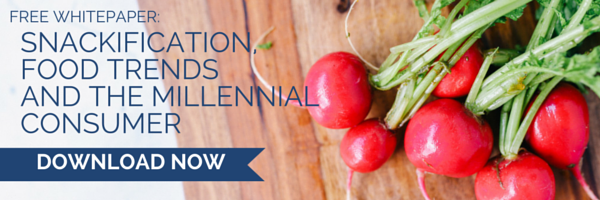
Mouthfeel is a critical part of the food experience — especially when it comes to low-fat meats or meat substitutes. But how do you convey the superior mouthfeel of your product via its packaging or in a marketing campaign?
By definition, mouthfeel is a sensory experience. So, to convey the experience, you need to use words and images that evoke that experience. That is, of course, easier said than done.
Let's use a hypothetical product as a case study in mouthfeel marketing.
We talked in our last article about how sous vide prep can be a powerful ally in preserving the intended mouthfeel of a product, in that it is a forgiving cooking method and allows for greater variance in cooking time.
So, for the moment, let's imagine that you have developed a new, sous vide, pea protein-based product — called VeggieRack — that tastes and feels just like a bite of barbecued pork ribs. How do you market that?
Well, let's start by examining what the emulated product is supposed to taste like. What are some basic words you might employ to describe a bite of barbecued pork ribs?
- Tender
- Sweet
- Tangy
- Smoky
- Savory
- Spicy
- Warm
- Saucy
- Succulent
- Juicy
That's a good start. But do they convey emotion to the consumer? Not really. So let's think of some of the emotions or sensations the consumer might experience in the course of cooking and eating ribs:
- Anticipation
- Hunger
- Excitement
- Pleasure
- Messiness
- Fulfillment
- Nostalgia
- Warmth
Now, as an exercise, which of those words describing the mouthfeel of a bite of ribs can be paired with the emotions the eater would likely feel? What kinds of words or phrases convey both an aspect of mouthfeel and a particular sensation or emotion?
Well, anticipation, warmth and smoky can easily be evoked by the phrase "pit-smoked." Tender, juicy, warm and hunger are all evoked by the phrase "slow-cooked." Saucy and messiness are evoked by "slathered" or "covered." Warm, pleasure and nostalgia are evoked by the phrase "backyard cookout."
So, you could market your veggie protein sous vide "ribs" like so:
VeggieRack Ribs
Taking the barnyard out of your backyard barbecue.
Our tangy, slow-cooked, vegan-friendly ribs are covered in a thick, signature Sweet'n'Tangy sauce that brings you all the pit-smoked, fall-off-the-bone flavor of a summer cookout, without all the fat.
A picture is worth a thousand words. But mouthfeel may be worth several pictures.
The copy was easy, no? But what of images? Again, we're conveying mouthfeel here, so we need to pair impactful copy with pictures that evoke the end experience.
The thing is, so much is in play with mouthfeel — potentially dozens of discrete tastes, textures and smells, all interacting to produce a unique composite experience — that one picture or one graphic element is unlikely to accomplish your goal.
Maybe the package needs wisps of smoke and sun rays poking around the margins. Certainly those evoke smokiness and cookout imagery.
Juxtapose them with images of the side of a fork being used to cut through a bite of VeggieRack (this clearly implies tenderness and juiciness) and a full sauce bowl with a dripping sauce brush, next to a clove of garlic, a tomato, an onion and a pepper (imparting the saucy, tangy and spicy tastes the consumer should anticipate).
Mouthfeel is complex. And many food producers do a poor job of conveying it in their advertising. If you can find a way to build anticipation for your product's mouthfeel, you'll enjoy a competitive edge. You shouldn't be afraid to use several words and images to paint an accurate portrait of its flavor profile.







